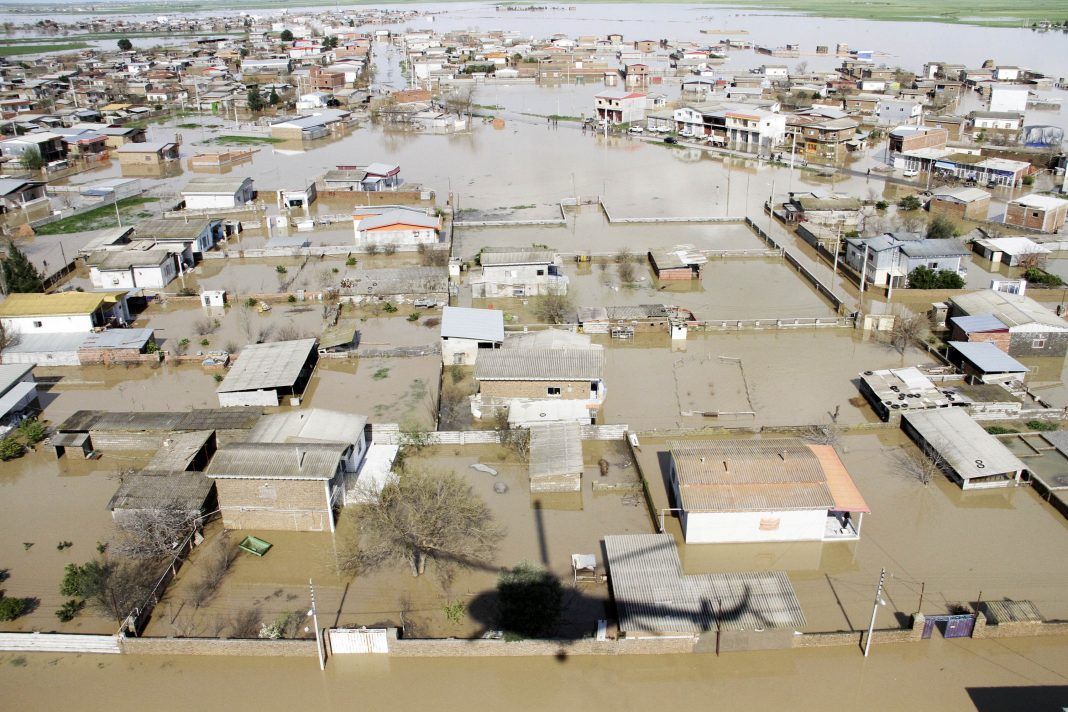Mar. 29 – At least 44 people have died in flash floods in Iran. The announcement was made by Hamid Reza Khankeh the deputy head of Iran’s emergency organization and published in Iranian online newspaper Entekhab. The death toll is already higher than it was after the last wave of flash floods in the region in 2015, which claimed the lives of 11 people.
An estimated 18.5 million people in 304 towns and cities have been affected by the floods which have displaced 1.2 million people inside the country, the Red Crescent Society reported on Thursday. So far shelter has only been provided for 29,030 people.
The extensive damage caused by the flash floods could have been avoided or significantly reduced through proper management of Iran’s waterways, environmentalists say.
[aesop_video src=”self” hosted=”https://kayhanlife.com/wp-content/uploads/2019/03/bf55ee4c-d3a1-459c-aa8c-8582c2990d5d.mp4″ align=”center” caption=”@FreedomMessenger” disable_for_mobile=”off” loop=”on” controls=”on” autoplay=”on” mute=”off” viewstart=”on” viewend=”on” revealfx=”off” overlay_revealfx=”off”]
Dr. Namdar Baghaei-Yazdi — a visiting lecturer and researcher at the School of Life Sciences at the University of Westminster in London and the manager of the environmental team at the Phoenix Project in Washington — told Kayhan Life that climate change and government mismanagement were both to blame.
“In the North [Golestan province], the main reason for the floods is the deforestation of the region, and this invites flooding, because there is no barrier to stop huge amounts of water from making their way across the landscape,” he said.
“Climate change is also to blame, and is not caused by the Islamic Republic. It’s a natural phenomenon. We are going through climactic changes which are affecting the whole world,” he added.
A tweet posted on March 26 by Iran’s official news outlet IRNA, shows the province of Golestan completely submerged in water. A report from Iranian media outlet Tehran Times said that floods in northern Iran along the Caspian Sea had caused losses of $392 million to the country’s agricultural sector.
The floods coincided with Iran’s New Year celebrations and several senior officials were away on holiday. Iran’s Vice President Es’haq Jahangiri this week fired the governor of Golestan province, Manaf Hashemi, because he failed to return from his vacation in Europe to help the thousands in the province who were left stranded in inland seas caused by the floods.
[aesop_image img=”https://kayhanlife.com/wp-content/uploads/2019/03/Flood-List.png” panorama=”off” align=”center” lightbox=”off” captionposition=”left” revealfx=”off” overlay_revealfx=”off”]
The Iranian government faces increasing criticism from the Iranian public on social media on the grounds that mismanagement caused much of the damage and that officials did not react fast enough to the water crisis.
Celebrities in Iran set up crowdfunding appeals. However, the government told Iranian media outlets that it would shut down non-official fundraising initiatives. All donations would have to be made through the Red Crescent Society or the official Aid Committee to avoid potential financial fraud, Deputy Attorney General Javid Javidnia told the Mizan news agency, which is affiliated with the Iranian judiciary.
“People moved water to where they wanted it, not where it should have gone for environmental reasons, and this has caused the current problems,” said David Laylin, an ecologist with extensive experience in rural Iran, in an interview. “There has been no understanding of the science of water. People inside Iran attribute the flooding to God’s work, but that’s nonsense.”
“Iran has excellent scientists and needs the help of all of its professional environmentalists,” he added.
Laylin made other observations in March in an Iran-focused newsletter, including data indicating that climate change was not responsible for Iran’s water crisis. Sharing rainfall metrics from the University of California’s RainSphere website Laylin said the data showed that, “Iran had experienced a drop in rainfall which was statistically insignificant.” He also listed past efforts that had been made with the help of UN organizations to address Iran’s water crisis.
[aesop_image img=”https://kayhanlife.com/wp-content/uploads/2019/03/Rainfall-in-Iran-UCLIrvine.png” panorama=”off” credit=”Rainfall in Iran (UCLIrvine)” align=”center” lightbox=”off” captionposition=”left” revealfx=”off” overlay_revealfx=”off”]
Several episodes of ecological mismanagement have been recounted in the Iranian media in recent days.
A railway line set up by Iran’s Revolutionary Guards Corps (IRGC) which was damaged by floods had to undergo a controlled explosion after it was discovered that the line, which was built on a river bed, did not have viaducts to divert water. According to the economic news agency Eghtesad Online, a controlled blast was carried out under the railway line to open up the waterway which had been blocked by the line. Engineers commenting on the railway said cost-cutting and lack of foresight were the cause of the faulty railway line, which, they said, should have been built across a bridge.
Another incident reported in July 2018 by Iran media outlet Mashregh News describes the illicit building of villas on the Jajrood River in Northern Iran. Authorities began tearing down the villas which were blocking the waterway and affecting the river’s wildlife.
Dr. Baghaei-Yazdi told Kayhan Life that deforestation, a failure to maintain Iran’s waterways and financial profiteering had also contributed to the flooding.
“Deforestation creates one disaster after another. It’s a knock-on effect,” he said.
“The government also appears not to have done any reservoir cleaning or dam maintenance. We are seeing debris flowing downstream into the rivers. We have also seen the government use salt water to irrigate where fresh water should have been used, leading to the destruction of fish and ocean life. Currently 600 dams have been built in Iran, which is a disproportionate amount, as only 300 were necessary. The rest were just built for profit.”
Laylin suggested that various authorities in Iran could do much more to prevent similar natural disasters in the future.
“A nationwide effort by the government could easily be launched, perhaps helped by the Association of Imam Jomehs, after selected members receive training in basic land or water conservation and management,” he said. “These clerics could help government efforts by supporting extension service programs in local areas targeted for assistance.”


